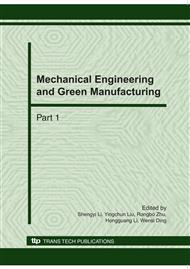p.1
p.7
p.13
p.19
p.25
p.33
p.44
Collaborative Optimization for the Cold Extrusion Die and Process Parameters of Wheel Hub Bearing Rings
Abstract:
The traditional optimization method for cold extrusion forming needs to perform finite element analysis repeatedly and therefore has to consume significant computational resource. This paper describes a collaborative optimization method for the cold extrusion die and process parameters of wheel hub bearing rings, combined using finite element analysis, orthogonal experiment, neural network and genetic algorithm. Orthogonal experiment is used to design experimental schemes. Neural network is used to establish mapping relationship between die and process parameters and maximum extrusion force. Genetic algorithm is used to optimize cold extrusion die and process parameters. Via this approach the finite element analysis is relatively independent of optimization process, which just provides training samples of neural network and evaluates the optimized results obtained by genetic algorithm. It overcomes the deficiency of large computational resource consumption of traditional optimization method and provides a fast and effective approach for die and process optimization of cold extrusion forming.
Info:
Periodical:
Pages:
13-18
Citation:
Online since:
October 2010
Authors:
Price:
Сopyright:
© 2010 Trans Tech Publications Ltd. All Rights Reserved
Share:
Citation:


